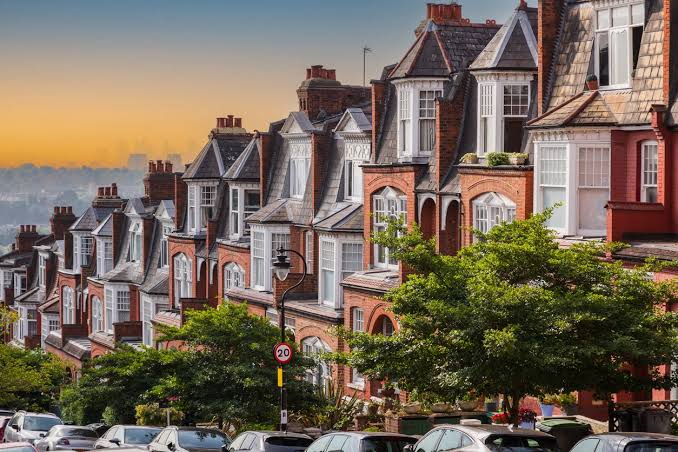The UK luxury property market has long been a magnet for high-net-worth individuals (HNWIs), both domestic and international. HNWIs, defined as individuals with investable assets exceeding £1 million, have a significant impact on the demand, pricing, and development of high-end real estate. As these individuals seek prime locations and properties with unique features, their purchasing power reshapes the landscape of the luxury market, particularly in key areas such as London, the Home Counties, and other sought-after regions across the UK according to estate agents in Bristol.
In this article, we explore the various ways in which HNWIs influence the UK’s luxury property market, the dynamics that drive their buying behaviour, and the long-term effects on the market’s sustainability.
1. London: A Global Hub for Luxury Property
London remains the focal point of the UK luxury property market, attracting HNWIs from across the globe. The capital’s appeal lies in its status as a major financial hub, cultural epicentre, and home to some of the world’s finest properties. Areas like Knightsbridge, Mayfair, Chelsea, and Kensington are synonymous with high-end real estate, with HNWIs flocking to these neighbourhoods to purchase exclusive homes and apartments.
a. Demand for Prime and Super-Prime Properties
Prime properties in London are those valued at over £1 million, while super-prime properties generally refer to homes priced at over £10 million. These properties often feature lavish designs, state-of-the-art amenities, and exclusive services, making them highly desirable among affluent buyers.
- International Demand: London’s luxury market attracts a significant proportion of overseas buyers, particularly from regions like the Middle East, China, Russia, and the United States. These buyers view London not only as a desirable place to live but also as a safe haven for their wealth, given the political stability and transparent legal framework in the UK.
- Long-Term Investment: Many HNWIs are motivated by London’s historical property price growth and stability, seeing luxury real estate as a solid long-term investment. London’s property market has proven resilient, with prime property values continuing to appreciate over time, even in the face of political uncertainties such as Brexit.
Impact on Market: The influx of international buyers contributes to rising prices in London’s most exclusive neighbourhoods. This demand for prime and super-prime properties can lead to competition among wealthy individuals, pushing prices even higher.
b. Development of Ultra-Luxury Properties
The demand from HNWIs has prompted developers to create ultra-luxury developments that cater to the highest echelons of society. These properties often include unique features such as:
- Private spas and gyms
- 24-hour concierge services
- High-level security systems
- Bespoke interiors designed by renowned architects or designers
Example: Developments such as One Hyde Park in Knightsbridge and The Shard Residences represent the epitome of luxury, with some apartments priced upwards of £50 million. These buildings offer more than just homes—they provide a lifestyle, offering residents privacy, exclusivity, and the convenience of high-end services.
Impact on Market: Ultra-luxury developments serve as a significant draw for HNWIs, particularly international buyers. The demand for these bespoke properties raises the bar for future developments and reinforces the premium pricing seen in prime London neighbourhoods.
2. Impact on Regional Luxury Markets
While London is the epicentre of the UK’s luxury property market, HNWIs are increasingly looking beyond the capital to other regions, including the Home Counties and prime coastal areas. This trend is driven by a combination of factors, including a desire for more space, privacy, and access to the countryside.
a. The Home Counties and Countryside Appeal
The Home Counties, which include areas such as Surrey, Berkshire, and Buckinghamshire, are seeing growing interest from HNWIs seeking large estates, period homes, and luxury modern properties. The proximity to London combined with the tranquillity of the countryside makes these areas highly attractive to affluent individuals.
- Country Estates and Manor Homes: HNWIs are often drawn to expansive country estates, which offer more land, privacy, and prestige than properties in the city. Many of these estates are historic homes with significant heritage value, adding to their desirability.
- Luxury New Builds: In addition to period homes, the Home Counties have seen the development of luxury new builds that combine modern amenities with traditional English country charm.
Impact on Market: The demand from HNWIs for properties in the Home Counties has driven up property prices in these regions, with areas such as Virginia Water and Wentworth becoming well-known for their exclusive, high-value homes. Prices in these regions can rival those of prime London neighbourhoods, especially for large estates with extensive grounds.
b. Coastal and Rural Locations
In addition to the Home Counties, HNWIs are increasingly interested in coastal and rural areas, particularly in regions like Cornwall, Devon, and the Lake District. These areas offer the perfect combination of natural beauty, privacy, and luxury living.
- Luxury Coastal Homes: Coastal properties with private beach access or scenic views are highly sought after, particularly for HNWIs who are looking for holiday homes or second residences.
- Private Retreats: Rural properties that offer seclusion and exclusivity, such as large farmhouses or estates with hundreds of acres of land, are becoming popular with wealthy buyers looking for peaceful getaways.
Impact on Market: This shift in demand towards coastal and rural properties is leading to price growth in these traditionally quieter areas, as more HNWIs seek luxury homes outside of urban centres. Some local markets have seen substantial appreciation as a result of this new wave of investment.
3. The Role of Investment and Speculation
HNWIs do not just buy luxury properties for personal use—they also view them as long-term investments or speculative assets. The UK property market has historically been seen as a safe-haven investment, especially in times of global economic or political uncertainty.
a. Property as a Safe-Haven Asset
In times of economic volatility or political uncertainty, UK property, particularly in prime markets like London, has been regarded as a reliable store of wealth. HNWIs often turn to luxury real estate as a means of preserving capital, especially in a stable market like the UK, which offers legal transparency and property ownership security.
- Wealth Preservation: Rather than chasing high yields, many HNWIs view luxury property as a way to hedge against inflation or currency devaluation. They value the capital preservation that prime UK real estate can offer, even if rental yields are relatively low compared to other asset classes.
Impact on Market: The influx of investment-driven purchases by HNWIs can cause price inflation, particularly in areas that are already limited in supply. This can create competition, driving prices up for luxury homes that are considered safe-haven assets.
b. Property Speculation and “Flipping”
Some HNWIs engage in property speculation, purchasing luxury homes with the intention of reselling them at a higher price in the near future. This practice, commonly referred to as “flipping,” is particularly prevalent in areas experiencing rapid price growth.
- Prime and Super-Prime Flipping: In high-demand markets like London, HNWIs may purchase newly developed properties or homes requiring renovation, make improvements, and then sell them for a profit. This practice contributes to the constant flow of high-value transactions and can create short-term price volatility in certain neighbourhoods.
Impact on Market: Speculative investment can inflate property prices in prime areas, especially when HNWIs are actively competing for limited high-end properties. This dynamic may drive up prices for both existing homes and new developments, impacting affordability and market stability.
4. Long-Term Sustainability of the Luxury Market
While the influx of HNWIs has undoubtedly boosted demand in the luxury property market, there are concerns about the long-term sustainability of this sector, particularly with respect to pricing and market access for domestic buyers.
a. Affordability for Domestic Buyers
The rise in prices driven by HNWIs can make it increasingly difficult for domestic buyers to enter the luxury property market. As prices in prime areas continue to climb, many domestic buyers are priced out, even in traditionally affluent neighbourhoods.
- Gentrification and Displacement: In some cases, the influx of wealthy international buyers can lead to the gentrification of certain neighbourhoods, displacing long-term residents and creating a more exclusive, less diverse community.
b. Market Resilience and Future Trends
Despite concerns about affordability, the UK luxury property market remains resilient, particularly in prime locations. As the global economy stabilises post-pandemic, demand for luxury properties from HNWIs is expected to remain strong, driven by the UK’s global appeal, stable legal system, and high-quality real estate.
- Sustainability of Prices: While price growth may slow in the short term due to economic uncertainties, the luxury market is likely to continue benefiting from demand among HNWIs. Long-term trends point to continued investment in prime and super-prime properties, particularly in London and affluent regions like the Home Counties.
Final Thoughts
High-net-worth individuals have a profound influence on the UK luxury property market, shaping demand, driving up prices, and contributing to the development of ultra-luxury homes. London remains the focal point of this activity, but other areas, including the Home Counties and rural or coastal locations, are seeing increased interest from affluent buyers. While the rise of HNWIs in the luxury market provides economic benefits, it also raises questions about affordability for domestic buyers and the long-term sustainability of price growth in prime areas. For both developers and investors, understanding the preferences and motivations of HNWIs will be key to navigating the evolving landscape of the UK’s luxury property market.




